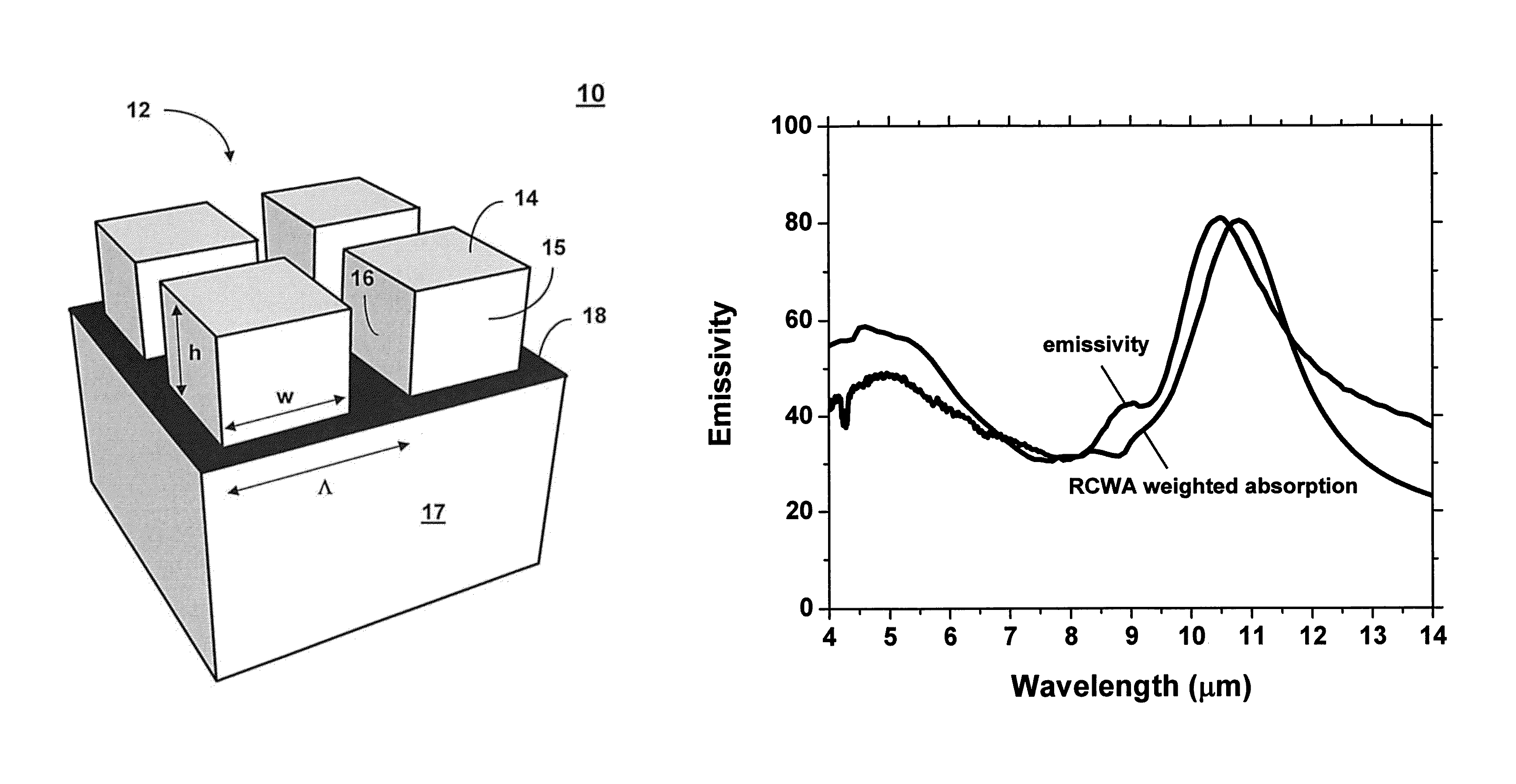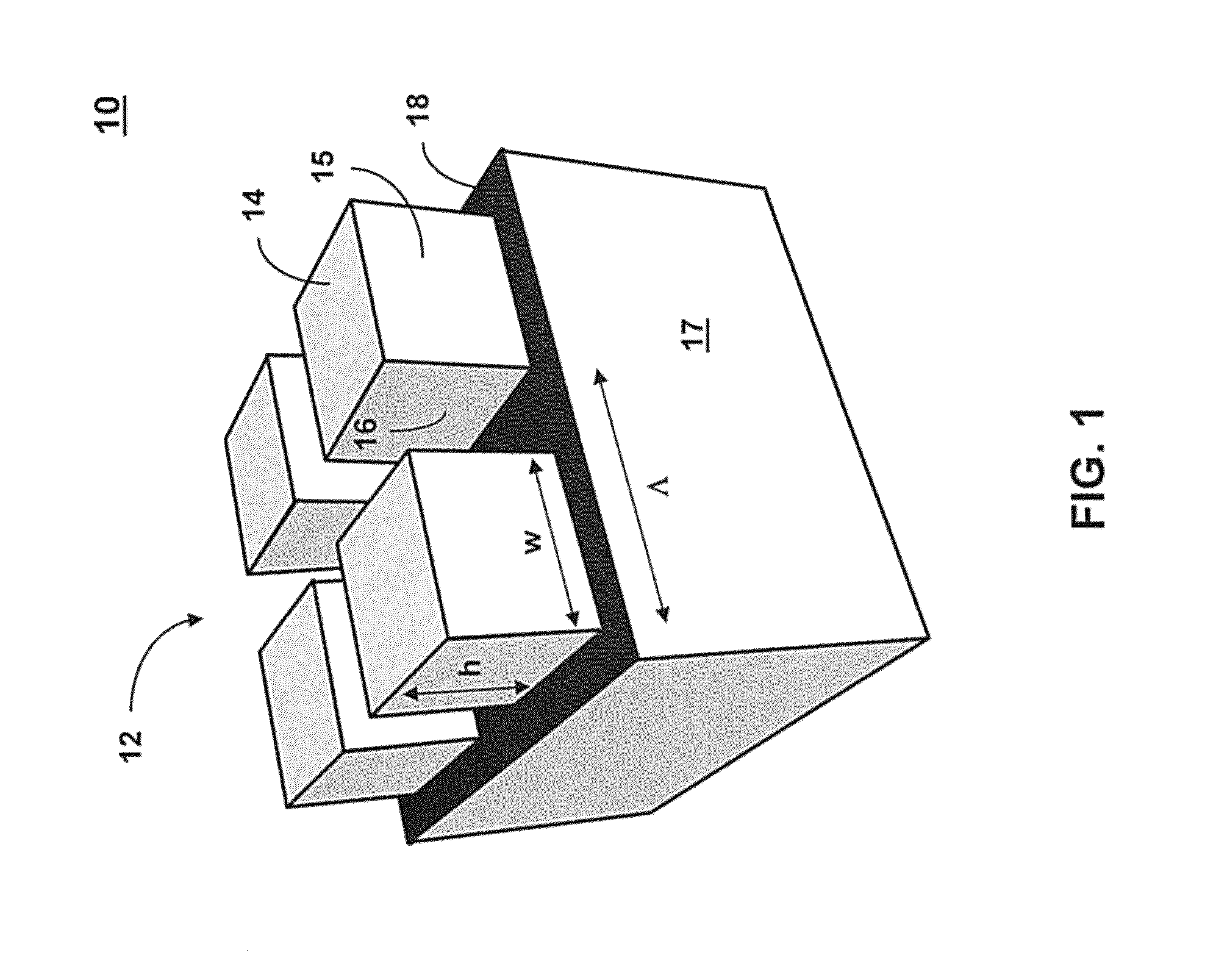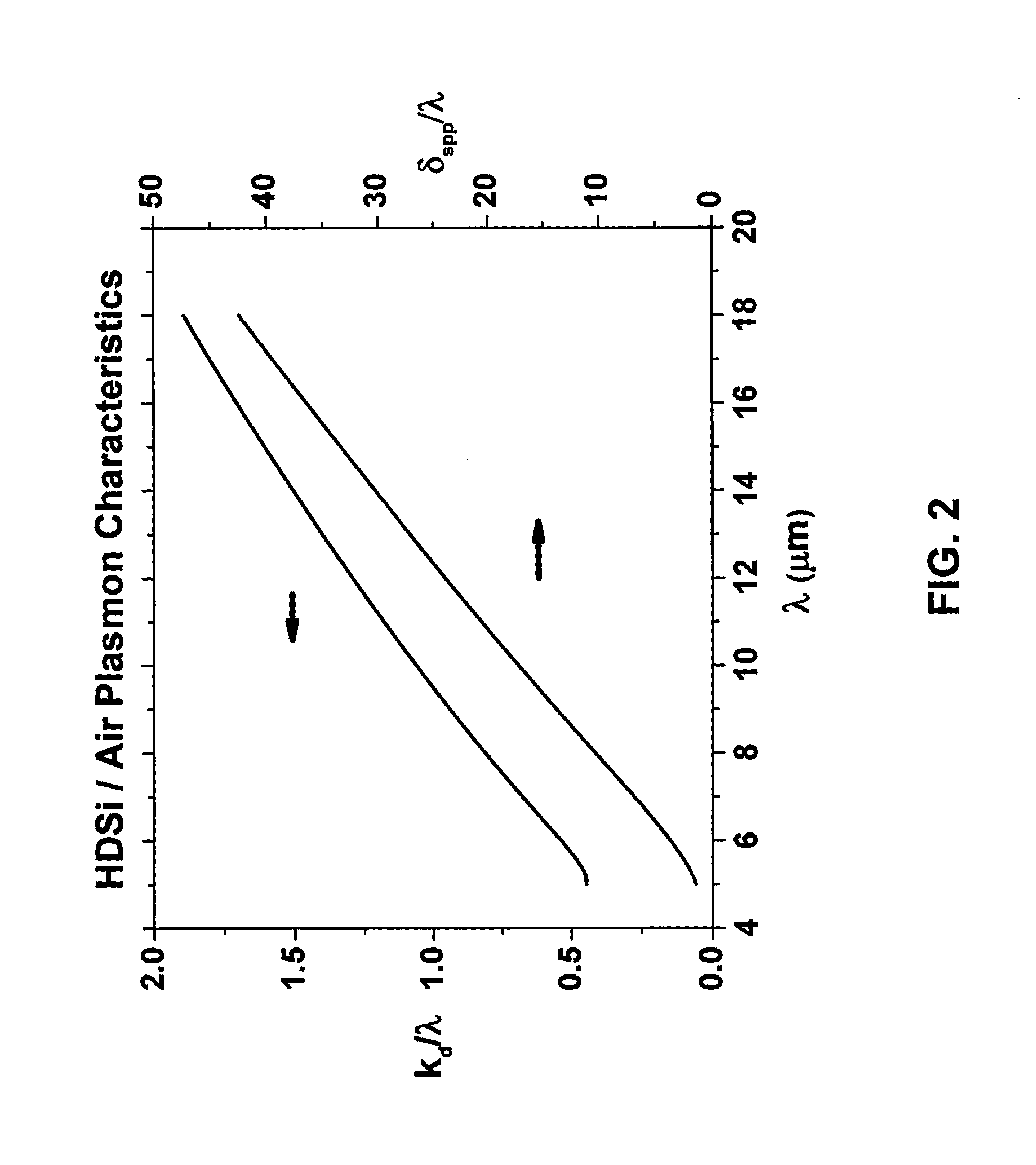Highly directional thermal emitter
a thermal emitter and high-direction technology, applied in the field of thermal emission, can solve the problems of high confinement and high loss of conventional spp's, and achieve the effects of high reflectivity of solar radiation, increased bandwidth tailoring, and high degree of angular dependen
- Summary
- Abstract
- Description
- Claims
- Application Information
AI Technical Summary
Benefits of technology
Problems solved by technology
Method used
Image
Examples
Embodiment Construction
[0017]The surface plasmon dispersion relation is given by:
[0018]ksp=k0ɛmɛdɛm+ɛd,(1)
where k0 is the free space propagation vector and ∈m and ∈d are the complex metal and dielectric permittivities, respectively. All plasmon mode characteristics can be determined from this relation which is dependent on the relative magnitudes of ∈m and ∈d. The variation in the magnitudes of ∈m for the visible and infrared (IR) is the source of the physical distinctions and can be easily understood by using the Drude model to describe the optical dispersion of a medium with free electrons subject to collisional damping. Here, the frequency dependent permittivity is expressed as:
[0019]ɛ(ω)=ɛ∞(1+iωp2τω(1-iωτ)),(2)
where ∈∞ is the high frequency permittivity, ω is the exciting frequency, τ is the collision rate, and the plasma frequency:
[0020]ωp2=ne2m*ɛ0ɛ∞,(3)
is a function of the carrier density n, the effective mass m*, and ∈∞. In conventional metals, the plasma frequency is in the ultraviol...
PUM
 Login to View More
Login to View More Abstract
Description
Claims
Application Information
 Login to View More
Login to View More - R&D
- Intellectual Property
- Life Sciences
- Materials
- Tech Scout
- Unparalleled Data Quality
- Higher Quality Content
- 60% Fewer Hallucinations
Browse by: Latest US Patents, China's latest patents, Technical Efficacy Thesaurus, Application Domain, Technology Topic, Popular Technical Reports.
© 2025 PatSnap. All rights reserved.Legal|Privacy policy|Modern Slavery Act Transparency Statement|Sitemap|About US| Contact US: help@patsnap.com



